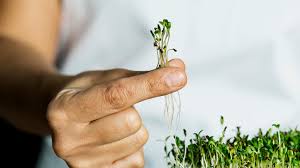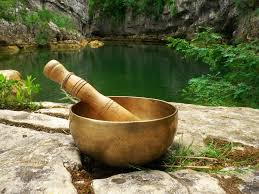
Cultural Beliefs Around Banslochan in India
Banslochan, also known as “Tabasheer” or “Bamboo Silica,” holds a significant place in Indian traditional beliefs and healing systems. From Ayurvedic formulations to religious ceremonies and cultural customs, Banslochan has been deeply woven into the fabric of Indian society. Especially revered in rural and tribal communities, this natural extract from bamboo is often associated with purity, health, and spiritual protection. In this article, we will explore the cultural significance of Banslochan across different regions of India and how its uses go beyond medicinal properties to represent rituals, beliefs, and folklore that have persisted for centuries.
🟢 Long Description: Cultural Beliefs Around Banslochan in India
✅ What is Banslochan?
Banslochan is the silica-based resin found inside mature female bamboo stems. In Ayurveda and other traditional systems, it is praised for its cooling, sweet, and rejuvenating properties. However, Banslochan’s cultural importance goes far beyond its medicinal value. It is a sacred substance in many Indian households and rituals, revered across regions, languages, and belief systems.
✅ Historical Reverence in Indian Culture
Historically, Banslochan has been referenced in ancient texts and passed down through generations as a symbol of health, wisdom, and longevity. It was often stored in temple kitchens, used in royal tonics, or included in rituals performed for infants and brides. Folk traditions associated Banslochan with divine blessings and protection from evil energies.
✅ Banslochan in Religious Ceremonies
In many parts of India, Banslochan is used in religious practices like Navratri, Diwali, and Durga Puja. During these festivals, it is offered as prasad or mixed in sacred preparations consumed for purification. Its association with the goddess Durga and other deities is well documented, with its cooling and stabilizing nature considered to harmonize spiritual energy.
In Bengali households, for instance, it is believed that consuming Banslochan as part of a devotional offering helps balance doshas (vital energies) and increase mental clarity during spiritual fasting.
✅ Protective Talismans & Ritualistic Use
In tribal and rural India, Banslochan is sometimes used in talismans to ward off evil spirits. Parents may place a small pouch of Banslochan powder under a child’s pillow to protect them from nightmares or malefic influences. Similarly, during the building of a new house, some regions mix Banslochan with turmeric and cow dung to sprinkle at the foundation site — a symbolic gesture of spiritual protection.
✅ A Sacred Offering in Marriage Rituals
In certain North Indian and Maharashtrian marriage ceremonies, Banslochan is offered to the bride and groom to symbolize purity and lifelong harmony. It is sometimes added to traditional sweets served to newlyweds, believed to calm the mind and nurture fertility.
The belief stems from the ancient understanding that the body and spirit must be in balance during the sacred union of marriage — and Banslochan, with its cooling, sattvic (pure) properties, contributes to that harmony.
✅ Banslochan in Ayurvedic Postpartum Traditions
In South India, Banslochan is incorporated into postpartum care rituals for new mothers. After childbirth, Banslochan is consumed as part of Ayurvedic recipes meant to restore vitality, strength, and peace of mind. Elders often emphasize the importance of this herb for bone health and energy, making it an essential element in traditional confinement diets.
✅ Influence in Folk Healing Practices
In various folk traditions, Banslochan is used in healing chants, ‘jhaad phoonk’ rituals, and natural remedies. These rituals are often performed by healers or spiritual practitioners who believe that Banslochan, being derived from bamboo (a plant with rapid growth and strong roots), carries the energy of protection, resilience, and balance.
✅ The Role of Banslochan in Astrology and Vastu
In Vastu Shastra and Indian astrology, Banslochan is considered a stabilizing element. Some Vastu experts recommend keeping Banslochan near the study area or workplace to invite clarity of thought and remove negative vibrations. Astrologers sometimes prescribe Banslochan-based mixtures during certain planetary transits to minimize their ill effects, especially when related to Moon or Mercury doshas.
✅ Cultural Stories & Folklore Surrounding Banslochan
India’s diverse culture is rich with stories and myths tied to plants and herbs, and Banslochan is no exception. In some tales, Banslochan is referred to as the “sweat of the moon,” falling on bamboo to form this magical crystalline substance. Such stories, though mythological in nature, reinforce the spiritual symbolism of Banslochan as something pure, rare, and powerful.
In the tribal communities of Chhattisgarh and Odisha, there are oral traditions where elders narrate tales of forest spirits gifting Banslochan to healers for saving their people from curses or plagues.
✅ Generational Beliefs and Urban Decline
While rural and traditional households still honor Banslochan’s cultural value, its prominence is gradually declining in urban spaces. Fast-paced lifestyles and a shift toward modern medicine have somewhat displaced such traditional knowledge systems. However, a resurgence in Ayurvedic living and holistic wellness has revived interest in herbs like Banslochan, especially among younger generations exploring their roots.
✅ Conclusion: A Symbol of Balance and Holistic Well-Being
Banslochan continues to be a living symbol of India’s holistic healing traditions, spiritual beliefs, and deep-rooted cultural wisdom. Whether used in religious ceremonies, marriage rituals, or postpartum recovery, Banslochan represents more than just a herbal extract — it is a bridge between health, harmony, and heritage.
As India moves toward blending modern wellness with ancient tradition, rediscovering such culturally meaningful elements ensures that we not only honor our past but also enrich our future with time-tested wisdom.










